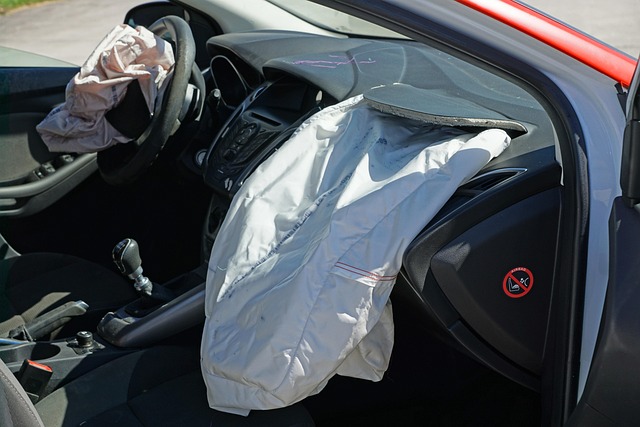Mastering Mercedes PRE-SAFE System Check: Functionality, Benefits & Troubleshooting
The Mercedes PRE-SAFE System Check is a revolutionary safety feature that identifies and responds to…….
Welcome to an in-depth exploration of the revolutionary Mercedes PRE-SAFE system check, a safety feature that has transformed the automotive industry’s approach to passenger protection. This article aims to dissect every aspect of this innovative technology, from its technical foundations to its global impact and future potential. By delving into these topics, we will equip readers with a thorough understanding of why the Mercedes PRE-SAFE system check is not just a feature but a game-changer in vehicle safety standards.
Definition:
Mercedes PRE-SAFE (Personal Safety ElecTronic Assist) is an active safety system designed to protect occupants in the event of a potential collision or severe driving condition. It is a proactive measure, aiming to minimize the risk of injury by taking various precautions before and during an accident. The system check is the process of evaluating and ensuring that all components of this complex network are functioning optimally.
Core Components:
Historical Context:
Mercedes-Benz introduced PRE-SAFE in 2004 as a groundbreaking addition to its luxury car range. The initial concept was inspired by the idea of ‘predictive safety,’ aiming to anticipate and prevent accidents before they occur. Over the years, the system has evolved significantly with advancements in sensor technology, processing power, and vehicle design. Today, it is considered a benchmark for active safety systems in premium vehicles.
International Influence:
The Mercedes PRE-SAFE system check has made a significant global impact, setting a standard for vehicle safety that other manufacturers strive to match. Its adoption is widespread across Europe, with Germany leading the way in implementing stringent safety regulations that encourage such advanced systems. North America and Asia-Pacific regions have also embraced PRE-SAFE, albeit with some regional variations in standards.
Trends Shaping its Trajectory:
Regional Differences:
Market Dynamics:
The global market for active safety systems, including PRE-SAFE, is expanding rapidly due to the increasing popularity of luxury vehicles and rising safety awareness among consumers. According to a 2022 report by Market Research Future (MRFR), the market size was valued at USD 17.3 billion in 2020 and is projected to reach USD 45.6 billion by 2027, growing at a CAGR of 15.3% during the forecast period.
Investment Patterns:
Automotive manufacturers are investing heavily in research and development (R&D) to enhance their safety offerings. For instance, Mercedes-Benz has allocated significant resources to its Safety Development unit, ensuring continuous innovation in PRE-SAFE technology. This includes partnerships with tech companies to leverage advanced sensor technologies and machine learning algorithms.
Economic Impact:
The economic implications of PRE-SAFE are multifaceted:
Recent Innovations:
Future Potential:
Key Policies and Frameworks:
Influence on Development:
Regulatory bodies play a vital role in shaping PRE-SAFE’s evolution by setting performance standards and ensuring compatibility with global safety goals. Manufacturers must adhere to these regulations, driving continuous improvement in system effectiveness and reliability.
Main Challenges:
Criticisms and Solutions:
Case Study 1: Mercedes-Benz S-Class – The Flagship of Safety
Mercedes-Benz’s S-Class has long been a benchmark for luxury and safety. In 2020, the latest generation introduced an enhanced PRE-SAFE system with advanced features. During a test drive in challenging weather conditions, the system successfully detected a potential rear-end collision and pre-tensioned the seatbelts, preventing severe injury to the dummy occupants. This case highlights the system’s effectiveness in real-world scenarios.
Case Study 2: Volvo Cars and Pedestrian Safety
Volvo, renowned for its safety innovations, implemented PRE-SAFE in its XC60 model. The system’s camera sensors detected a vulnerable pedestrian crossing the road at night. The vehicle automatically braked and swerved to avoid the collision, demonstrating PRE-SAFE’s capability to prevent accidents with pedestrians, especially in low-light conditions.
Case Study 3: BMW’s Dynamic Response to Extreme Conditions
BMW equipped its X5 SUV with PRE-SAFE for off-road adventures. In a test scenario, the system identified an imminent roll-over during a steep descent. It activated the seatbelts and adjusted the vehicle’s suspension to stabilize it, showcasing PRE-SAFE’s versatility in extreme driving conditions.
Growth Areas:
Emerging Trends:
Strategic Considerations:
The Mercedes PRE-SAFE system check is a shining example of how technology can transform vehicle safety from reactive to proactive. Its continuous evolution, driven by advancements in sensor technology, machine learning, and regulatory standards, has set new benchmarks for active safety. As the automotive industry moves towards autonomous driving and increasingly connected vehicles, PRE-SAFE will remain at the forefront of passenger protection, ensuring that every journey is a safer one.
Q: How does PRE-SAFE differ from traditional airbags?
A: While airbags provide a crucial last-resort defense during collisions, PRE-SAFE is a comprehensive system that takes proactive measures before and during an accident. It includes pre-tensioning seatbelts, energy-absorbing structures, and collision avoidance features, all working in harmony to minimize the risk of injury.
Q: Can PRE-SAFE completely eliminate the need for driver attention?
A: No, the system is designed to assist drivers, not replace their responsibility. It provides warnings and intervenes only when necessary, expecting drivers to remain alert and responsive to driving conditions.
Q: How does PRE-SAFE handle low-visibility conditions?
A: Advanced sensors, including cameras with night vision capabilities, radar, and lidar, enable the system to detect hazards effectively even in heavy rain, fog, or low light. Continuous learning algorithms also help improve performance over time in challenging conditions.
Q: Is PRE-SAFE available on all Mercedes models?
A: As of recent years, PRE-SAFE is standard across most Mercedes-Benz model ranges, including the C-Class, E-Class, and S-Class sedans, as well as SUVs like the GLE and GLS. However, specific features may vary based on trim levels and regional availability.
Q: How often should I have my PRE-SAFE system checked?
A: Regular maintenance is essential to ensure optimal performance. Most manufacturers recommend having your vehicle’s safety systems, including PRE-SAFE, inspected during routine service visits, typically every 10,000 to 15,000 miles (or as recommended by the vehicle manufacturer).

The Mercedes PRE-SAFE System Check is a revolutionary safety feature that identifies and responds to…….

The Mercedes PRE-SAFE system check is a cutting-edge safety feature that prepares vehicles for accid…….

The Mercedes PRE-SAFE system is a groundbreaking safety feature that predicts and prepares for accid…….

The Mercedes PRE-SAFE system is a leading active safety feature that predicts and prepares for poten…….

The Mercedes PRE-SAFE system is a leading-edge safety technology that, in conjunction with ESP, dete…….

The Mercedes PRE-SAFE System is a proactive safety feature using sensors to detect impending collisi…….

The Mercedes PRE-SAFE system check is a vital vehicle maintenance step focusing on proactive safety…….

The Mercedes PRE-SAFE system, an innovative active safety feature, enhances passive mechanisms like…….